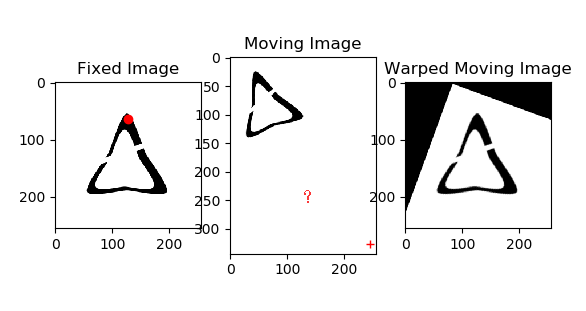AirLab is an open laboratory for medical image registration. It provides an environment for rapid prototyping and reproduction of registration algorithms. The unique feature of AirLab is, that the analytic gradients of the objective function are computed automatically with fosters rapid prototyping. In addition, the device on which the computations are performed, on a CPU or a GPU, is transparent. AirLab is implemented in Python using PyTorch as tensor and optimization library and SimpleITK for basic image IO. It profits therefore from recent advances made by the machine learning community.
AirLab is not meant to replace existing registration frameworks nor it implements deep learning methods only. It is rather a laboratory for image registration algorithms for rapid prototyping and reproduction. Furthermore, it borrows key functionality from PyTorch (autograd and optimization) which is of course not limited to deep learning methods.
We refer to our arXiv preprint 2018 for a detailed introduction of AirLab and its feature.
Authors: Robin Sandkuehler and Christoph Jud
Follow us on Twitter  to get informed about the most recent features, achievements and bugfixes.
to get informed about the most recent features, achievements and bugfixes.
- Clone git repository:
git clone https://github.com/airlab-unibas/airlab.git - Make sure that following python libraries are installed:
- pytorch
- numpy
- SimpleITK
- matplotlib
They can be installed with
pip.
We recommend to start with the example applications provided in the example folder.
The convolution operation, which is frequently used in AirLab, is performed in PyTorch. Currently, its CPU implementation is quite memory consuming. In order to process larger image data a GPU is required.
The project depends on following libraries:
The project started in the Center for medical Image Analysis & Navigation research group of the University of Basel.
- Robin Sandkuehler - initial work ([email protected])
- Christoph Jud - initial work ([email protected])
- Simon Andermatt - project support
- Alina Giger - presentation support
- Reinhard Wendler - logo design support
- Philippe C. Cattin - project support

Check out our AIRLab tutorial at MICCAI 2019 in Shenzhen: https://airlab-unibas.github.io/MICCAITutorial2019/
AirLab is licensed under the Apache 2.0 license. For details, consider the LICENSE and NOTICE file.
If you can use this software in any way, please cite us in your publications:
[2018] Robin Sandkuehler, Christoph Jud, Simon Andermatt, and Philippe C. Cattin. "AirLab: Autograd Image Registration Laboratory". arXiv preprint arXiv:1806.09907, 2018. link
We released AirLab to contribute to the community. Thus, if you find and/or fix bugs or extend the software please contribute as well and let us know or make a pull request.
We deeply appreciate the help of the following people:
- Iain Carmichael
- Benjamin Sugerman
AirLab depends on several third party open source project which are included as library. For details, consider the NOTICE file.





